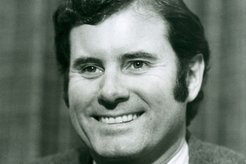Blatchford’s 1970’s “New Directions” for the Peace Corps (PC/HQ)
I first published Director Blatchford’s announcement in May, 1997 — JCoyne
•
New Directions
On my recent trip to Kenya, Libya and Iran I was often the recipient of warm thanks for the work done by others in the past, coming from government ministers truly grateful for a help hand. But just as often I was asked if we couldn’t somehow provide more people trained in vocational education, agriculture, and business management, for example, than are not available. Everywhere the cry was for mean and women with higher priority skills–who can also work with people–to fill priority development needs.
To consider these and other problems I called together a task force of 50 distinguished men and women to examine the Peace Corps in ten specific areas. They came from within and without the Peace Corps, from among former Volunteers, staff and men and women of outstanding ability in private life…I have since reviewed these reports…I have examined them in light of my own experience over eight years in Latin America.
Its major recommendation have been taken to President Nixon and now bear the stamp of his approval. In the year ahead we should test the new ideas with pilot projects. If the pace of change is as swift as I have suggested, these new ideas and pilot projects are themselves only a beginning.
The Peace Corps Volunteer in his community—that is what the Peace Corps is all about. Management must be so organized that it is responsive to the Volunteer in his community. This means that the Washington headquarters of the Peace Corps, in addition to recruiting and training Volunteers, must see itself as resource of the Peace Corps in the field, responding to the needs for support and placing confidence in the ability of the Volunteers and their staff to deal with local conditions.
We know all human institutions, particularly large ones, have a habit of lagging behind reality, putting yesterday’s solutions to today’s predicament. It becomes easiest to predict yesterday’s weather or fill some sector of responsibility with a Maginot Line while the problems effortlessly skirt the flanks. Even an organization like the Peace Corps which is intrinsically dedicated to change must ask itself, “Which one is ahead today, the problem or the solution?” The last thing we should want would be for the Peace Corps to become just another “good thing,” something nice and safe.
We should also encourage Peace Corps participation in multi-national teams for specific countries. This possibility was discussed at a Peace Corps sponsored conference June 26-29 near Washington with the directors of volunteers sending organizations in England, Germany, Sweden, Switzerland, the Netherlands and Indonesia.
From The Peace Corps in the 1970s—outlining “New Directions”
Joseph H. Blatchford


Concerning the last paragraph, this is interesting, as the first thoughts about “internationalizing” the Peace Corps, was as early as the first groups, in the middle 1960s. Whilst other Nations, mainly from Europe, have volunteer efforts, if any coordination exists, as originally envisioned by early volunteers, say, under UN direction, it hasn’t happened except through informal avenues. This essay by Mr Blatchford also speaks to something I personally have been advocating for years: more emphasis on technical projects, and less AB Generalist emphasis. Most interesting, now four decades later. John Turnbull Ghana-3 Geology and Nyasaland/Malawi-2 Geology Assignment 1963, -64,-65.